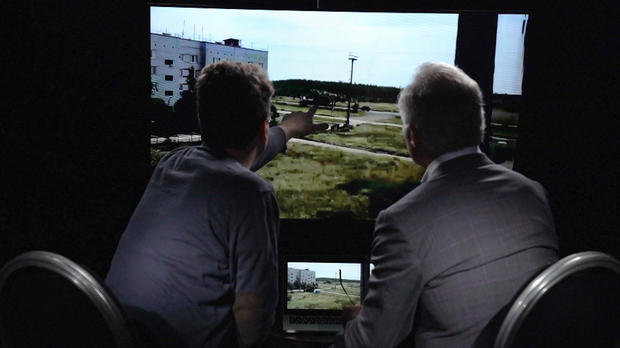How Bellingcat tracked a Russian missile system in Ukraine
On July 17, 2014, Malaysia Airlines Flight MH17 was on route from Amsterdam to Kuala Lumpur when it was shot down by what prosecutors say was a Russian missile, killing all 298 people on board.
Now, days away from the six-year anniversary, four men are on trial in the Netherlands for 298 counts of murder.
- The long pursuit of justice for victims of MH17, the passenger jet shot down over Ukraine
- 60 Minutes producer Henry Schuster explains the evolution of the story on MH17
- Reconstruction of MH17 reveals final moments of doomed flight
In February, 60 Minutes correspondent Scott Pelley and producer Henry Schuster reported on the investigation that led Dutch prosecutors to charge Igor Girkin, Sergey Dubinsky, Oleg Pulatov and Leonid Kharchenko, with 298 counts of murder. The investigation, known as the Joint Investigative Team (JIT), was established after the shootdown and led by Dutch police, assisted by Australia, Ukraine, Malaysia and Belgium.
The trial began in March and while it is still in its preliminary stages, prosecutors have already revealed additional evidence uncovered by the JIT investigation— satellite images of a burned field, the alleged launch site, from the European Space Agency, telecoms data used to track the alleged missile system as it traveled through Ukraine, intercepted calls of defendants talking about a downed plane after the shootdown, and interviews with previously unknown witnesses.
Prosecutors say one of those witnesses, identified as M58 in court records, is a Russian separatist who was guarding the launch site at the moment the missile was fired. M58 says they were told later that it had struck a civilian aircraft. M58 also claims that Russian military personnel were present at the launch site.
Some of the earliest evidence in the case of MH17 wasn't discovered by a traditional investigative body. Instead, Bellingcat, an online investigative collective lead by Eliot Higgins, made a break in the case when it found videos and photos posted online, beginning the day of the shooting. Following a trail of digital "breadcrumbs," the group spotted and identified a Russian Buk TELAR missile system as it made its way through rebel-controlled territory. The rebels were funded and armed by Russia, which had already annexed Crimea, another part of Ukraine.
"In this war zone of eastern Ukraine, there were a lot of people, average civilians, who were shooting videos and stills of military convoys going back and forth," Pelley tells 60 Minutes Overtime. "There were quite a number of photographs of this particular missile system which was on the bed of a flatbed truck."
Bellingcat's Higgins showed 60 Minutes how his investigative team used open-source tools, including Google Maps and Google Earth, and videos and photos posted online, to trace the missile system all the way back to its suspected origin, a Russian military base in Kursk.
Higgins says the Bellingcat team was able to identify a phone number on the side of the flatbed truck that was hauling the missile launcher. The number belonged to a vehicle yard in the separatist-controlled part of eastern Ukraine. Higgins says, "In fact, people called that number up and asked the owner, 'What's going on? Why is your truck in this photograph?' And he said his vehicle had been taken over by separatists sometime earlier."
Bellingcat was also able to identify the location of the convoy by comparing images posted online to satellite imagery, in a process known as geolocation. Matching multiple unique objects in the images, Bellingcat's team was able to determine a precise location for each image. The team used shadows in the images to determine the approximate time of day that the photo or video was taken. The trail led them all the way to Kursk, Russia.
"And in Kursk, there's a missile brigade called the 53rd Air Defense Brigade, and we were able to establish for certain that the missile launcher came from that particular brigade," Higgins says.
The JIT would later independently verify Bellingcat's findings, crediting their work as "groundbreaking" in the early stages of the investigation.
All four of the defendants are still at large as the trial proceeds. 60 Minutes found Girkin living openly in Moscow and denying a role in the shootdown. Three of the defendants are being tried in absentia, while Oleg Pulatov is represented by a defense team. Under Dutch law, Putlatov does not need to attend the trial in person.
Pulatov's lawyers maintain that he is innocent and have been granted additional time to conduct investigations and meet with Pulatov in person.
The trial will resume on August 31st.
The video above was originally published on February 23, 2020.





